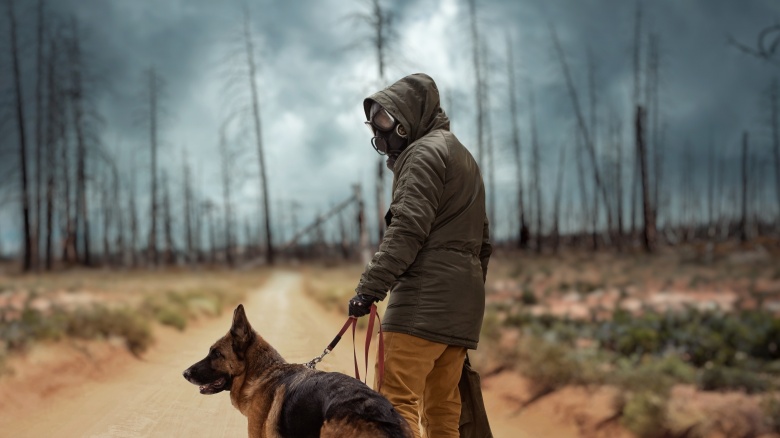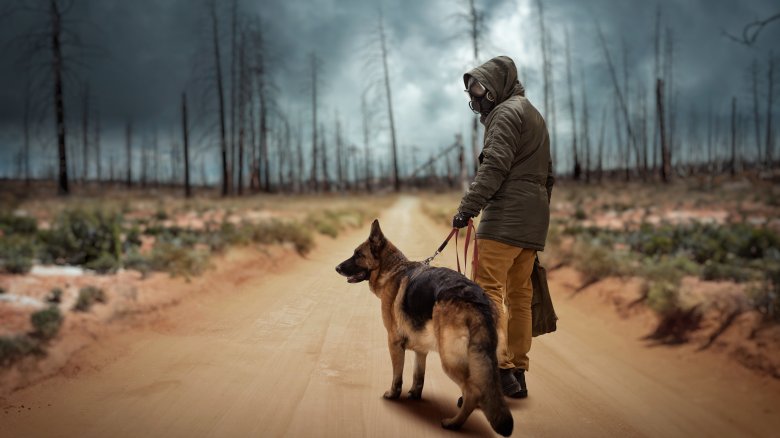
Post-apocalyptic fiction is all the rage, and part of the reason it’s so popular is it’s fun to imagine what would happen if humans really were facing the end. Sure, everyone has a plan and everyone thinks they’re going to be one of the survivors, but dig through history a bit and it’s clear that’s probably not going to be the case. (Sorry!)
The human race has faced extinction before, and at several points in our long history mankind has been reduced to only a handful of individuals. Yes, that means we’re all descended from the same small pocket of humanity, which explains quite a lot. It also shows just how resilient mankind is as a species, and considering some scientists have warned that the planet is approaching another mass extinction event (via The Guardian), it might be a good time to brush up on what’s happened before and learn some potentially important lessons. Here are major events that almost wiped out our ancestors.
Someone forgot to bless the rains in Africa
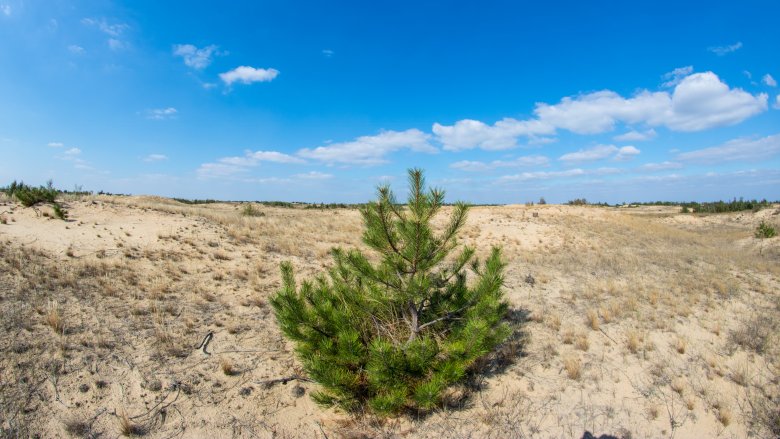
The planet’s climate has shifted a lot, and when extreme, long-term weather happens, a lot of other horrible stuff happens, too. In 2007, a study from the University of Arizona (via Science Daily) assembled the pieces of a strange puzzle. Researchers found that between 135,000 and 90,000 years ago — about the time humans started leaving Africa and looking for somewhere else to live — the continent was hit by a megadrought. Lush lands were turned to dry scrub, the Kalahari and Sahel deserts expanded, vegetation disappeared, and so did lakes.
That explains another study, from 2008. This one — published in the American Journal of Human Genetics (via The Telegraph) — found that during those years, the population of early humans dropped to only about 2,000 individuals. Researchers were able to determine the number by tracing mitochondrial DNA (that’s the DNA passed through a mother’s line) back thousands of years. They found the megadrought likely broke humans into small splinter groups that headed out of the desolate wasteland their beautiful Africa had become, looking for literal greener pastures.
Those isolated groups developed independently, and National Geographic explorer in residence Spencer Wells puts it like this: “Tiny bands of early humans, forced apart by harsh environmental conditions, coming back from the brink to reunite and populate the world. Truly an epic drama, written in our DNA.” Netflix Originals department, are you listening?
The flu felt ’round the world

In spite of the name, Spanish flu didn’t originate in Spain. (It was only called that because it was most completely covered by Spain’s media.) National Geographic says the first recorded cases were in Camp Funston, Kansas, a U.S. Army base that was part of the military’s mobilization for World War I. A single soldier reported to the infirmary on March 4, 1918, and 18 months later more than a third of the world’s population was infected, and as many as 100 million people were dead.
Death counts vary wildly, but the number of people who died in those 18 months is comparable to the number that died in both World Wars. It was everywhere, from densely populated countries like India to the remotest of islands. It was spread largely by the movement of troops across the globe, and it wasn’t a nice way to go. It would start with fever, shortness of breath, and blue skin from the lack of oxygen. It would end with “catastrophic vomiting and nosebleeds, with victims drowning in their own fluids.”
It was flu, but no ordinary flu. The healthier and stronger a person was, the more deadly it ended up being. Recent research (via Time) shows the virus overstimulated a person’s immune system and the body destroyed itself. The most susceptible were healthy adults between 20 and 40, and those people made up many of the dead.
In 1492, Columbus sailed … on death ships
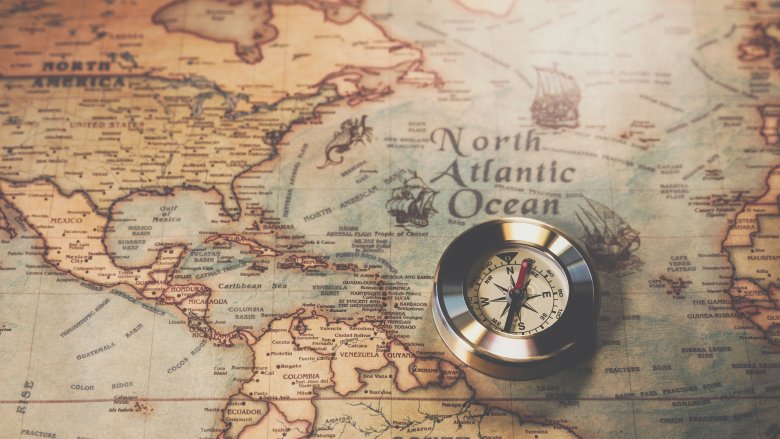
Christopher Columbus did a ton of horrible things, that’s been well documented. He also kicked off large-scale diseases on both sides of the ocean, and while there’s no way to get accurate numbers on how many people he killed, it’s safe to say he very well could have wiped mankind off the planet.
First, heading west. Columbus, his men, and their livestock were carrying influenza strains, measles, and smallpox when they went to the New World, and they were unthinkably deadly to people who had no immunity to these strange new sickness. One of the numbers historians do have (via the Oklahoma Medical Research Foundation) is just what they did to the indigenous people of Hispaniola. That was Columbus’ first stop and when he landed, there were around 250,000 people there. Fast-forward to 1517, and disease had taken all but around 14,000. Ultimately, historians also estimate as much as 90 percent of some native populations were killed.
Now, the other direction. When Columbus headed back, his ships weren’t any less dangerous. He took back tuberculosis and a deadly version of syphilis, so horrible it caused ulcers that ate into a person’s bones. Quartz says it wasn’t just illness and death that syphilis came with, it was xenophobia, racism, and finger-pointing at the people thought to be unclean harbingers of disease. Ironically, the people who were responsible — those men who had spent a long time at sea — weren’t rightly blamed until centuries later.
Bring out yer dead
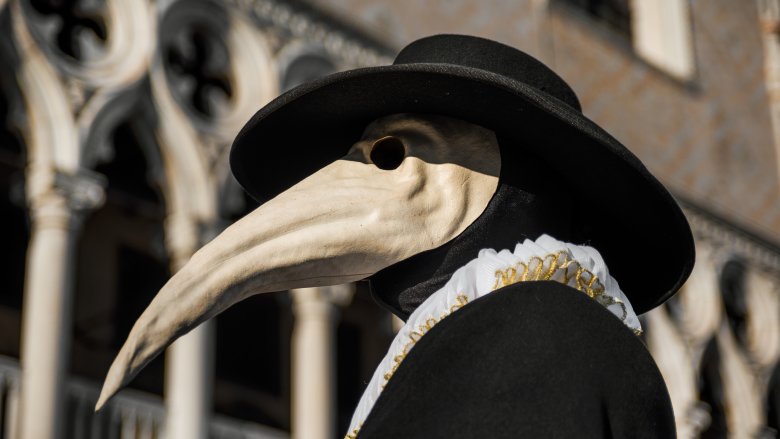
It’s hard to imagine being knee-deep in the Black Death, but that’s a pretty literal interpretation of what happened. People died by the scores: National Geographic says the final tally was 50 million people between 1347 and 1351, but LiveScience estimates it was closer to 75 million. Either way, those numbers included 7,000 people in Cairo each day, about half of Russia, a third of China, three-quarters of Florence, and huge chunks of remote outposts like Iceland and Greenland.
Actually, “waist-deep” might be more accurate.
No episode in history exists alone, and the devastation and death brought by disease is just part of the story. Sure, there were good things — like an increased awareness in the importance of sanitation — but the death wasn’t over. Jews were targeted by a new wave of hatred, and with so many dead, there was suddenly a huge labor shortage. Records are, of course, iffy, but thanks to the scribes of Irish monasteries (via History Ireland) we know what happened there.
After the plague decimated the country, entire estates stood empty and unused. Labor shortages led to empty fields and unmanned ports, which in turn led to food shortages and starvation. With so many children dead, that hurt the population’s ability to rebuild itself, and the small number of survivors meant entire towns fell to roving bands of insurgent Gaelic chieftains. It wasn’t just the Black Death that took lives, it was the chaotic and often bloody aftermath, too.
The longest winter of them all
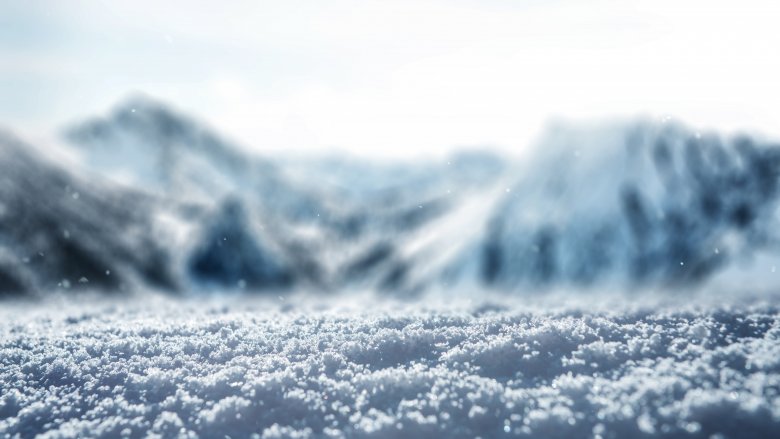
Climate change isn’t just some imaginary, strange phenomenon, and around 195,000 years ago it nearly wiped out the human race. That’s when the world passed into a phase today’s scientists call Marine Isotope Stage 6. (our ancestors probably just referred to it with expletives.) It lasted around 72,000 years, and it essentially turned Africa into a frozen wasteland.
According to Scientific American, that’s when most of the world’s population died. There were around 10,000 early humans living as the glacial frosts descended, and only a couple hundred survived to repopulate the entire planet. In the late 1990s, researchers actually found the exact location where this tiny pocket of humanity survived: in a series of caves in Pinnacle Point, South Africa. Further excavations found that those hardy folks survived on plants called geophytes (that is, ones that grow their edible parts underground, like tubers and bulbs), and shellfish like mussels and sea snails.
It would have been a bleak, desolate life where people dug for roots and scheduled their foraging trips to the shoreline by the Moon, as to avoid the deadliest of tidal swells — it was so hard, in fact, that the tools and foraging behaviors thought to have contributed to their survival seem to indicate hardship forced the development of cognitive thinking. Essentially, they had to evolve to survive, and that puts hardship in a whole new perspective.
Ebola’s Patient Zero

The world still sees Ebola outbreaks, and it’s still terrifying. What’s more terrifying is the first time it ever happened.
The very first Ebola outbreak happened in the little village of Yambuku in 1976. (Today, it’s in what’s known as the Democratic Republic of Congo, but it was Zaire then.) Strangely, more modern outbreaks have spread far and wide, but that first outbreak was contained before it could spread — a good thing because it had a death rate of 88 percent.
“Patient Zero” was an adult man who was hospitalized then spread the illness to about a dozen others who all died within a week. About a month later, blood samples were taken from a Belgian nun who was caring for the patients, and days after she died, the area was shut down.
The National Institutes of Health note that the illness lasted just over 10 weeks, 318 fell ill, and there were 280 deaths. Small, sure, but if medical personnel hadn’t reacted like they did and quarantined the town, it could have been catastrophic. For comparison, more modern strains of Ebola have about a 50 percent death rate and this one was much, much worse.
The 4.2 kiloyear event

Several ancient civilizations flourished and then disappeared, like those in the Indus Valley, Mesopotamia, and in the Yangtze River Valley; the most famous one is probably ancient Egypt. When researchers started looking at the collapse of all these giant civilizations, they found evidence they were all connected.
Sort of. For 200 years, the world’s climate shifted in what the International Commission on Stratigraphy calls the 4.2 kiloyear climactic event. It was essentially a megadrought that happened around 4,200 years ago and kicked off the collapse of the ancient world’s biggest and baddest civilizations, along with starting mass migrations into other parts of the world. Researchers from the University of Cambridge even pinpointed what caused the drought: a weak summer monsoon season that brought unbearably dry conditions. It’s impossible to tell just how many people died, but researchers do think it caused the fall of some of the world’s biggest Bronze Age cities.
Archaeological records give some tantalizing clues about just what happened to our ancestors 4,200 years ago, but perhaps most telling is the disappearance of entire scripts and the techniques of craftsmen and artisans. Settlements shifted as people looked for water, garbage collected in city streets, and civilizations crumbled.
The cocoliztli events

History class teaches a bit about what happened when the Spanish came to the New World and swept across it in search of gold and riches, but they didn’t just leave blood and bodies in their wake. They left disease, too, so deadly that outbreaks in the mid-16th century killed an estimated 80 percent of the population in what’s now Mexico.
The sickness was called cocoliztli, a word the Washington Post says means “pestilence.” Records left behind by friars who witnessed the disease are pretty terrible, with one man writing, “In the cities and large towns, big ditches were dug, and from morning to sunset the priests did nothing else but carry the dead bodies and throw them into the ditches.” Physicians describe patients with their tongues turning black as they were gripped by fever, delirium, and seizures. Urine was green or black, the entire body went yellow, hard nodes developed, and “the blood … had a green color or was very pale.”
What was it? Scientists aren’t sure, but when researchers extracted DNA from the teeth of some of the victims, they found traces of the same bacteria in all remains: Salmonella enterica. They’re quick to add that it’s likely only a small part of the disease that very nearly wiped out all of Mexico, and it’s no wonder they don’t teach that in school. It’s terrifying.
Bonilla’s comet
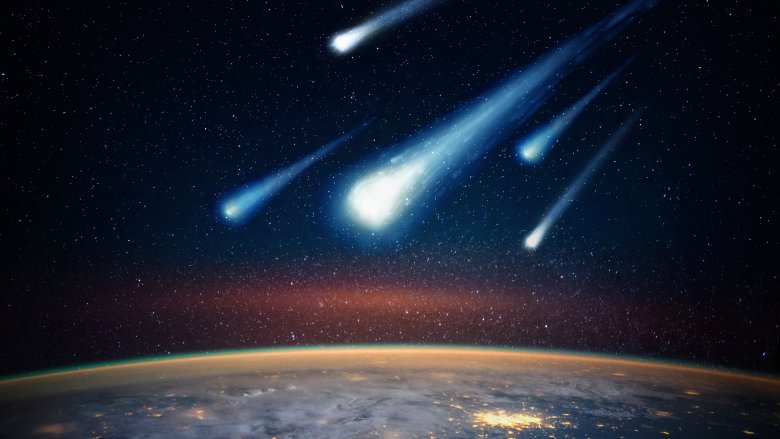
In 1886, astronomer Jose Bonilla published his report of observations he had made three years prior. On August 12 and 13, he had counted around 450 small objects silhouetted against the Sun. His observations were made over the course of about three and a half hours, so that means 3,275 of these misty, mysterious objects would have passed between Earth and the Sun in the 25-odd hours they were visible.
At the time, Bonilla’s colleagues essentially wrote off his observations, with one magazine even guessing he had actually seen a bunch of birds. It was only more than a century later that his observations were re-examined, and Space Safety Magazine says he had actually been witnessing the fragments of a billion-ton comet that had broken up as it approached Earth.
Bonilla was the only one to see them, and there’s an explanation for that, too. If the fragments were extremely close to our planet’s surface, they would have been silhouetted against the Sun only from a certain spot — a spot Bonilla just happened to be in. How close? Between 500 and 8,000 kilometers from the surface. That’s close enough that if it happened today, it would devastate our satellite and communication systems, and it’s something we never, ever want to happen again. Ever.
The Laki eruption
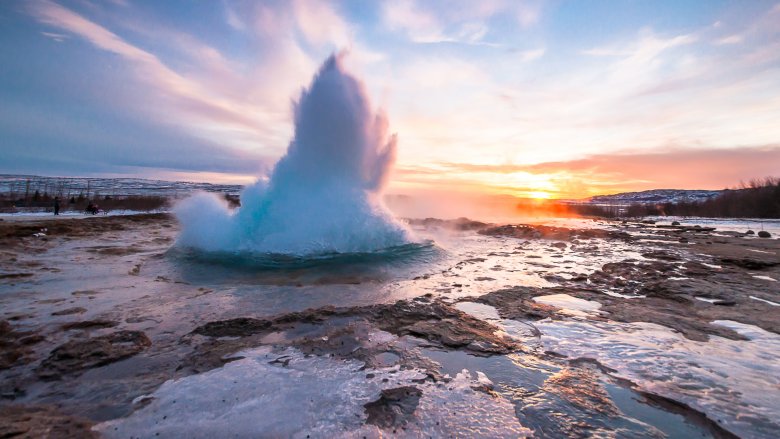
In 2010, the eruption of an Icelandic volcano caused problems for anyone who thought they were going to be flying anywhere in Europe, and it wasn’t the first time a volcano had disrupted life in Iceland. On June 8, 1783, it almost ended it.
At the time, the BBC says there were only about 50,000 people living in Iceland. A fifth would be wiped out in the eruption and the aftermath, and it was a very, very long aftermath. Laki continued to belch lava and toxic gases for the next eight months, creating craters of boiling lava called Lakagigar. Half of all large livestock died, along with eight out of every 10 sheep, and those that didn’t die from the eruption died from the starvation and sulfur poisoning that came later. Wired says the aftermath of the eruption is call the Haze Famine, and there are few terms more eerie than that.
It impacted those outside of Iceland, too. The sulfuric gas rose over Europe, turned into sulfuric acid rain, and started to fall. Estimates are tough to make, but it’s believed that somewhere around 20,000 people died in the U.K. as a result of the eruption. Volcanic dust and debris was seen as far away as China, so there’s no telling how many people succumbed to the haze.

